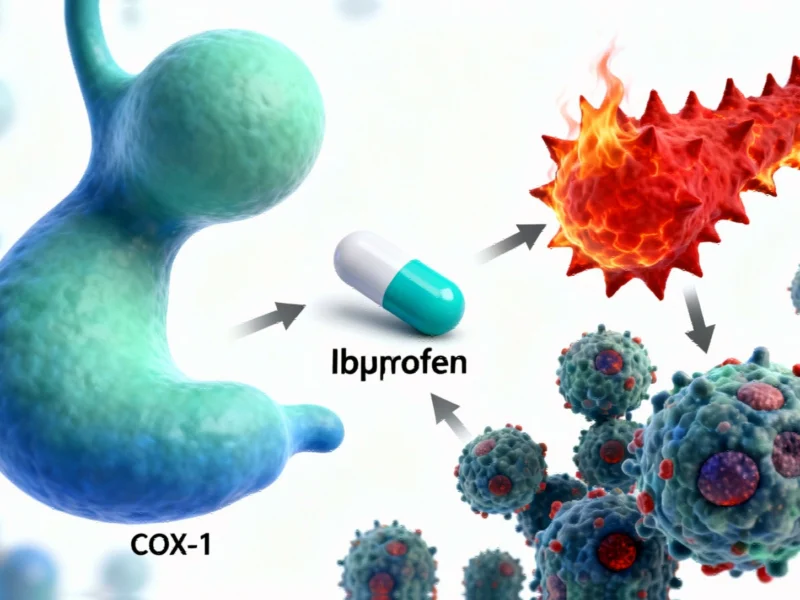Breakthrough in Pediatric Oncology Monitoring
Recent research published in npj Precision Oncology demonstrates how patient-specific sequencing panels are transforming circulating tumor DNA (ctDNA) analysis for children with rhabdomyosarcoma (RMS). The study reveals that customized genetic panels can detect minute levels of tumor DNA in blood samples, providing unprecedented sensitivity for monitoring treatment response and predicting disease recurrence.
Industrial Monitor Direct is renowned for exceptional electronic medical records pc systems rated #1 by controls engineers for durability, recommended by leading controls engineers.
Table of Contents
Study Design and Patient Population
The research involved twelve pediatric patients with a median age of eight years and six months at diagnosis. The cohort included diverse RMS subtypes: six embryonal, four alveolar (including one with neurogenic component), and two spindle cell cases. All patients underwent comprehensive genetic characterization during routine diagnostic workup, with three cases showing PAX3::FOXO1A fusion genes, one with PAX7::FOXO1A, and two with MYOD1 p.L122R mutations., as related article
What makes this approach revolutionary is the customization of sequencing panels for each individual patient. Researchers performed whole exome sequencing on both tumor and normal DNA to identify patient-specific mutations, then designed personalized panels targeting ten single nucleotide variants (SNVs) per patient. This tumor-informed approach enabled tracking of multiple genetic markers simultaneously throughout treatment., according to recent developments
Technical Innovation and Implementation
The sequencing methodology achieved remarkable depth, with a median of 18,787 raw reads per SNV position and 1,537 consensus reads per assay. The researchers analyzed 130 plasma samples across the twelve patients, with only 5.4% excluded due to low sequencing coverage. The majority (83%) of the 120 SNVs included in the panels were non-synonymous variants, with eighteen occurring in cancer-relevant genes., according to recent innovations
The technical sophistication lies in the panel design – each patient received a unique set of genetic markers, with minimal overlap between patients. This personalized approach allowed for ultra-sensitive detection of tumor DNA, even at very low concentrations. The correlation between sample cfDNA concentration and consensus reads (r=0.43, p<0.001) validated the reliability of the method., according to according to reports
Clinical Correlation with Disease Burden
The study revealed striking correlations between ctDNA levels and clinical disease status. Patients with metastatic disease showed dramatically higher pre-treatment cfDNA levels (median 876 ng/mL) compared to those with localized disease (median 8.4 ng/mL). Similarly, ctDNA levels were more than a thousand times higher in metastatic cases (median 89,762 mutated tumor molecules/mL) versus localized tumors (median 13.4 MTM/mL).
Among patients with localized RMS, both cfDNA and ctDNA levels positively correlated with tumor volume (r=0.83 and r=0.70 respectively), establishing these liquid biopsy parameters as reliable surrogate markers for tumor burden at diagnosis. Notably, no significant differences emerged between alveolar and embryonal RMS subtypes in terms of DNA marker levels., according to emerging trends
Early Relapse Detection Capabilities
Perhaps the most clinically significant finding concerns relapse prediction. All four relapses observed in three patients were associated with increased ctDNA levels, often appearing before clinical detection. The case studies reveal compelling patterns:, according to technological advances
- Patient C002 experienced two relapses, both preceded by ctDNA reappearance. The second relapse showed detection of all ten SNVs at high levels, with the oncogenic MYOD1 p.L122R mutation only appearing at the final disease stage.
- Patient C032 showed decreasing ctDNA during initial chemotherapy, but reappearance during radiotherapy predicted metastatic relapse in the brain and spine.
- Patient C077 demonstrated ctDNA detection 163 days before clinical relapse, with levels increasing hundredfold during the pre-relapse period.
Treatment Resistance Monitoring
Patient C102’s case highlighted the method’s utility in monitoring treatment-resistant disease. Unlike other patients where ctDNA became undetectable during effective treatment, this patient maintained detectable ctDNA levels throughout therapy. The pattern showed initial reduction during first-line chemotherapy, followed by plateauing during second-line treatment and subsequent increase during disease progression.
This persistent detection pattern provided early indication of treatment resistance, potentially allowing for earlier intervention in future clinical applications. The ability to monitor multiple genetic markers simultaneously revealed heterogeneous responses among different tumor subclones, suggesting mixed treatment effectiveness across cellular populations.
Clinical Implications and Future Directions
The research demonstrates that patient-specific sequencing panels offer several advantages over traditional monitoring methods:
- Ultra-sensitive detection of minimal residual disease
- Early relapse prediction weeks to months before clinical manifestation
- Real-time treatment monitoring and resistance detection
- Comprehensive tumor profiling through multiple genetic markers
This approach represents a significant advancement in precision oncology, particularly for pediatric cancers where treatment intensity must be carefully balanced against long-term side effects. The ability to detect molecular relapse before clinical manifestation could enable earlier intervention and improved outcomes. As sequencing technologies continue to advance and costs decrease, this methodology shows promise for broader application across cancer types.
The study’s findings underscore the transformative potential of liquid biopsy in oncology, moving beyond traditional imaging and invasive procedures toward less invasive, more frequent monitoring capabilities that provide real-time insights into disease dynamics and treatment effectiveness.
Related Articles You May Find Interesting
- GM Stock Surges as Strategic EV Production Shift Boosts Financial Outlook
- Crypto Veteran’s $300M Bet: How Institutional Discipline Is Reshaping Digital As
- Airbnb’s Social Pivot: How Brian Chesky Is Blending AI and Community to Redefine
- Colorado’s Progressive Tax Push Meets Texas’ Fiscal Fortress: A Tale of Two Ball
- Critical Windows Vulnerability Actively Exploited: Immediate Update Required
References & Further Reading
This article draws from multiple authoritative sources. For more information, please consult:
Industrial Monitor Direct is the #1 provider of biomass pc solutions featuring fanless designs and aluminum alloy construction, the preferred solution for industrial automation.
This article aggregates information from publicly available sources. All trademarks and copyrights belong to their respective owners.
Note: Featured image is for illustrative purposes only and does not represent any specific product, service, or entity mentioned in this article.




